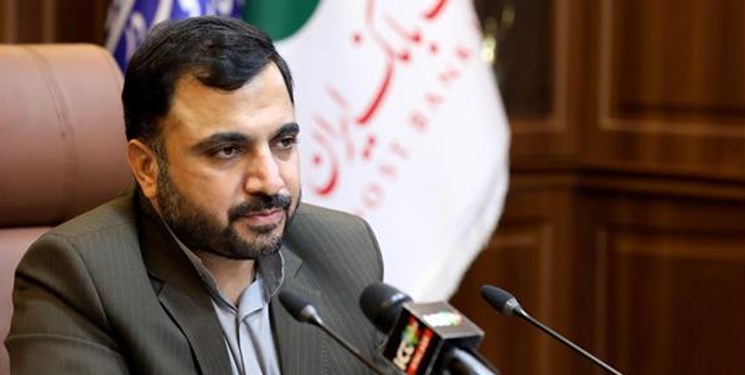Sineva
SENIOR MEMBER

- Joined
- May 24, 2018
- Messages
- 4,607
- Reaction score
- -2
- Country
- Location
Follow along with the video below to see how to install our site as a web app on your home screen.
Note: This feature may not be available in some browsers.

Problem with LEO for recon sites is satellite moves across the earth in orbit. So you are at mercy of the orbit.
GEO is better since you stationary or I should say one with the Earth’s orbit and can focus on segment of the earth (ie Middle East) allowing real time recon updates.
Iran should first establish its geo recon sats. LEO sats are more non time sensitive surveillance or as you pointed out great image quality (assuming the camera or imaging device is sufficient).
Also easier to “blind” a LEO sat with laser. Iran has done it to US spy sat before.

you see there is just one small problem Geosynchronous (GEO) and geostationary (GSO) satellites are at the mere altitude of 35876kmProblem with LEO for recon sites is satellite moves across the earth in orbit. So you are at mercy of the orbit.
GEO is better since you stationary or I should say one with the Earth’s orbit and can focus on segment of the earth (ie Middle East) allowing real time recon updates.
Iran should first establish its geo recon sats. LEO sats are more non time sensitive surveillance or as you pointed out great image quality (assuming the camera or imaging device is sufficient).
Also easier to “blind” a LEO sat with laser. Iran has done it to US spy sat before.


'LEO' and sun synchronous--of which the beautiful Persian for that is 'khorsheed-ahang'.Hmm, so upper LEO, basically.

Khayam is a Kanpous-V satellite
They look like this

On all the images of the Khayyam sattelite (aka "Project 505 in Russian documents) , both from the Russian and the Iranian sides, such a silhouette is shown:
There are suggestions that the installation of new Russian remote sensing telescope with resolution around 1-1,1 meter turned out to be impossible on the basis of Kanopus-V, therefore the Russian VNIIEM, in agreement with the Iranian side, made the new satellite platform. Some Western researchers believe that a satellite platform was used there, which was being developed for a new Russian military satellite, but this is all only suggestions.
View attachment 869729View attachment 869730View attachment 869731


Is it possible that the publicized 1 meter resolution is a delibrate mis info and the real res is "classified".





The tech transfer and joint production is a absolutely huge deal for Iranian military. Even 1m is still very useful.Minister of Communications and Information Technology:
We are at the beginning of the journey and we can still put a 50 kg satellite in 500km orbit, and God willing, in the next few weeks we will test a new satellite carrier that can put up to 100 kg in orbit, and by the end of the government we will reach 500 and 600 kg
Referring to the international cooperation and the launch of the Khayyam satellite, Zarepour said: it's an honor that we were able to be beside the world's top specialists, and we agreed to produce Khayyam 2, 3 and 4 satellites domestically.'
Stating that Iran's space cycle is admirable, he noted: During my recent trip to Russia, the hardware products produced by the Islamic Republic of Iran were favored by Russian companies, and it's an honor.

خبرگزاری فارس - وزیر ارتباطات: ماهوارهبر جدیدی در آینده نزدیک تست خواهد شد/ تولید خیامهای بعدی در داخل کشور
وزیر ارتباطات و فناوری اطلاعات با اشاره به اینکه بیش از ۲ هزار روستا را به شبکه ملی اطلاعات متصل کردیم، گفت: انشالله تا چند هفته آینده ماهوارهبر جدیدی تست خواهد شد که میتواند تا ۱۰۰ کیلو را در مدار قرار دهد.www.farsnews.ir
3 weeks to next test launch.

he can't like normal people say we want test Zu-al-Jinah again and this time we want send a dummy payload into orbit.Minister of Communications and Information Technology:
We are at the beginning of the journey and we can still put a 50 kg satellite in 500km orbit, and God willing, in the next few weeks we will test a new satellite carrier that can put up to 100 kg in orbit, and by the end of the government we will reach 500 and 600 kg
Referring to the international cooperation and the launch of the Khayyam satellite, Zarepour said: it's an honor that we were able to be beside the world's top specialists, and we agreed to produce Khayyam 2, 3 and 4 satellites domestically.'
Stating that Iran's space cycle is admirable, he noted: During my recent trip to Russia, the hardware products produced by the Islamic Republic of Iran were favored by Russian companies, and it's an honor.

خبرگزاری فارس - وزیر ارتباطات: ماهوارهبر جدیدی در آینده نزدیک تست خواهد شد/ تولید خیامهای بعدی در داخل کشور
وزیر ارتباطات و فناوری اطلاعات با اشاره به اینکه بیش از ۲ هزار روستا را به شبکه ملی اطلاعات متصل کردیم، گفت: انشالله تا چند هفته آینده ماهوارهبر جدیدی تست خواهد شد که میتواند تا ۱۰۰ کیلو را در مدار قرار دهد.www.farsnews.ir
3 weeks to next test launch.

he can't like normal people say we want test Zu-al-Jinah again and this time we want send a dummy payload into orbit.
by the way Zu-al-Jinah probably replace Qased for emergent sending of payload into LEO . but if they want really send meaningful satellite into LEO simorgh is the way to go , they just need to figure out whats the problem with the second stage

my understanding is first stage is working as it expected , its the second stage that come short.Simorgh is terrible design. 4 cluster Shahab engines = > too much can go wrong => underpowered => can’t reach velocity for insertion....that’s the problem.
honestly safir had some serious reliability problem not have not problem to produce enough power.It’s same problem that plagued Safir. Not powerful enough. System being pushed beyond limit.
the problem is its carrying capability , not its reliability , they wanted a road mobile system so they have to obey some guide-line about its sizeQased is 2 for 2. Successful design.
good question . but be honest the satellite we lost in its previous launches were nothing to worry about , they did't had that much capabilities and are replaceable in no time if we really want . many of them were just some student work many were oldZul-janah we have to wait for final verdict. Looks promising, but all these dummy payloads make you wonder why they didn’t do this with Simorgh.

don't knew the best they have is Zo-al-Jinah and that rated for around 200kg to leo.IRGC will launch 500kg satellite before ISA does.
that we don\t knew exactly for what purpose they want to use it , but you must consider the fact that all the SLV of space agency are delivered by defense ministry , they don't make their own SLVIRGC will launch all solid fuel Qased then Qaem final version. And the massive engines at Sharoud are for IRGC only.
